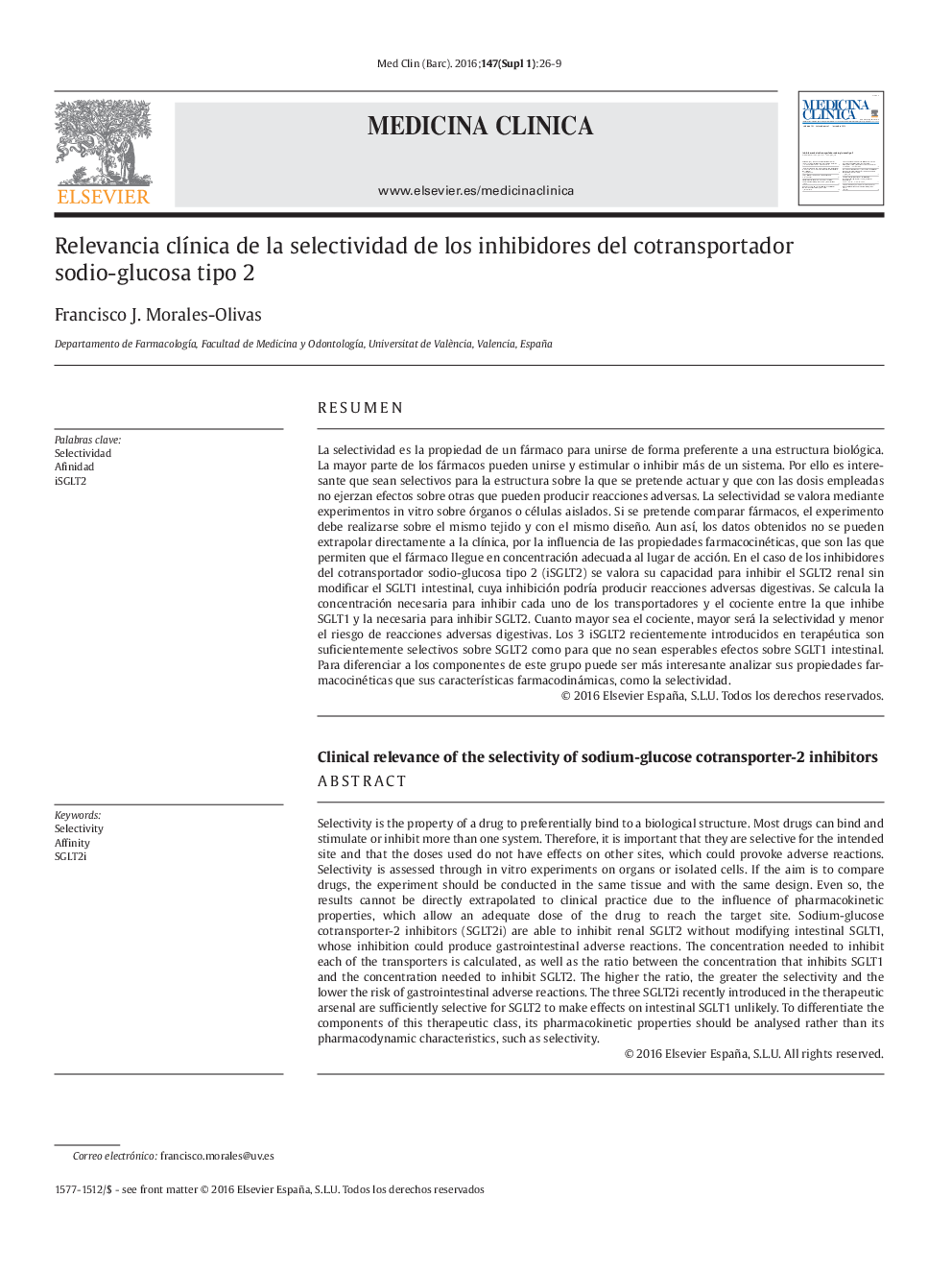| Article ID | Journal | Published Year | Pages | File Type |
|---|---|---|---|---|
| 5680954 | Medicina Clínica | 2016 | 4 Pages |
Abstract
Selectivity is the property of a drug to preferentially bind to a biological structure. Most drugs can bind and stimulate or inhibit more than one system. Therefore, it is important that they are selective for the intended site and that the doses used do not have effects on other sites, which could provoke adverse reactions. Selectivity is assessed through in vitro experiments on organs or isolated cells. If the aim is to compare drugs, the experiment should be conducted in the same tissue and with the same design. Even so, the results cannot be directly extrapolated to clinical practice due to the influence of pharmacokinetic properties, which allow an adequate dose of the drug to reach the target site. Sodium-glucose cotransporter-2 inhibitors (SGLT2i) are able to inhibit renal SGLT2 without modifying intestinal SGLT1, whose inhibition could produce gastrointestinal adverse reactions. The concentration needed to inhibit each of the transporters is calculated, as well as the ratio between the concentration that inhibits SGLT1 and the concentration needed to inhibit SGLT2. The higher the ratio, the greater the selectivity and the lower the risk of gastrointestinal adverse reactions. The three SGLT2i recently introduced in the therapeutic arsenal are sufficiently selective for SGLT2 to make effects on intestinal SGLT1 unlikely. To differentiate the components of this therapeutic class, its pharmacokinetic properties should be analysed rather than its pharmacodynamic characteristics, such as selectivity.
Keywords
Related Topics
Health Sciences
Medicine and Dentistry
Medicine and Dentistry (General)
Authors
Francisco J. Morales-Olivas,
